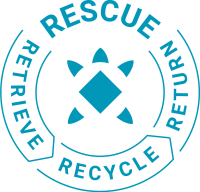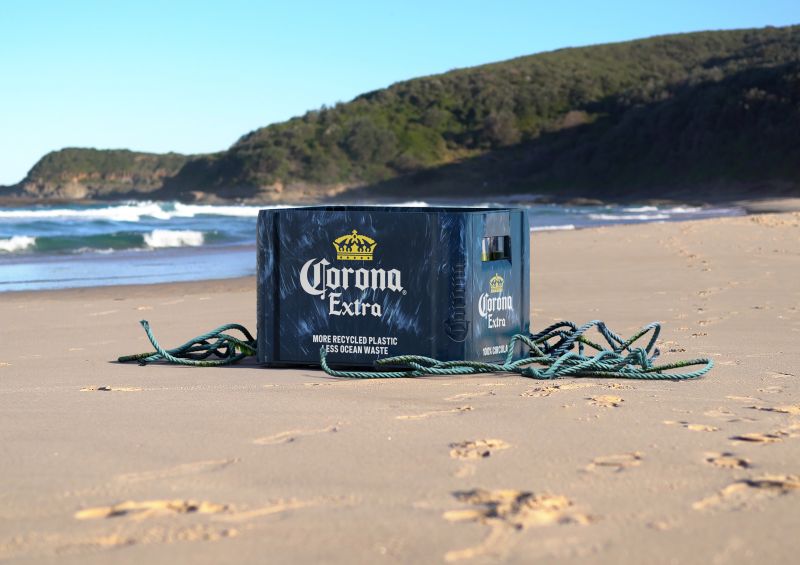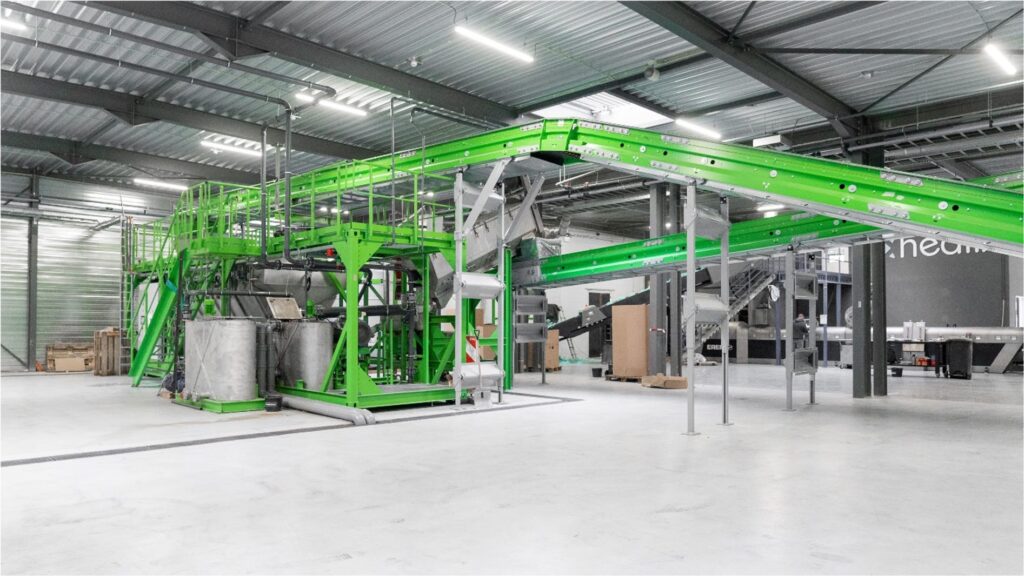Oceans
The Plastic Tsunami
Our blue planet is facing one of the biggest disasters in human history. Plastic pollution has become a significant threat to the health and survival of our oceans, wildlife, and ourselves. It is a global crisis that requires immediate action. Every minute, every day, a truckload of plastic waste is dumped into the ocean. Despite growing awareness, the problem continues to worsen. Without change, the annual flow of plastic into the sea will nearly triple by 2040. By 2050, there could be more plastic in the ocean than fish. Can you imagine?

Ghost Gear: The Silent Killer of the Seas
One of the deadliest types of marine plastic pollution is abandoned, lost, or discarded fishing gear – commonly called “ghost gear.” It was designed to kill in the first place and can continue to do so for decades.
Nets, lines, and ropes from fishing and shipping make up 46% of the 45,000-129,000 tons of plastic floating in the North Pacific Gyre.
A recent WWF study estimates that 5.7% of all fishing nets, 8.6% of traps and pots, and 29% of all fishing lines used globally are abandoned, lost, or discarded into the environment. The WWF report Stop Ghost Gear states, “Ghost gear is the deadliest form of marine plastic debris.” It can continue to catch target and non-target species unselectively for years, potentially decimating necessary food resources and endangered species, such as marine mammals, seabirds, and turtles.
Healix's Vision for a Sustainable Future
The harmful effect of plastic fiber waste on ecosystems is one of the most urgent problems facing the technical textile industry. Healix aims to combat this plastic pollution by transforming linear economies into sustainable circular economies by recycling plastic fiber waste into certified circular plastics. The recycling plant’s proven techniques, process, and design enable the creation of high-quality products. Plastic fiber waste is processed into granules in three steps.
First, the fibers are reduced in size, followed by washing and drying to ensure cleanliness. Finally, the particles are melted, filtered, and transformed into granules to be returned to the global production chain.


Technology
The combination and sequence of our machines, and specific features of the equipment used to recycle plastic fiber waste into performance polymers, in combination with the skill set and experience of our people is unique and allow us to recycle plastic fiber waste into high-quality polymers, that they can be used again to make new ropes, nets and big bags.
From the storage location the material enters the recycling process. To allow for space efficient transport most waste materials are pressed into bales or transported in bulk packaging.
As the process requires a continuous and homogeneous feed of loose material with a limited thickness, the dense bales and bulk packages are first broken apart. This also allows for inspection of the individual contents of the incoming bulk packages. The bulk material is loaded on a loader-feeder platform and into the feed hopper. In the feed hopper the bales are opened up and fed to the conveyer belt that transports the material to the chopper/cutting equipment.
Since post-consumer waste can be heavily contaminated with organic waste e.g. marine fouling, soil/sand, grass and other non-plastic waste, a first pre-cleaning and sorting step is conducted prior to feeding the material to the shredder and the washing process. Pre-cleaning and sorting at an early stage in the process has several advantages: Firstly, it removes contamination that could otherwise lead to increased wear and abrasion of the cutter/chopper knifes and components. Secondly, it reduces to amount of contamination that is released to the water in the washing step of the process. This reduces the efforts for water purification and reduces the ‘wet’ waste streams, called sludge.
After the pre-sorting/cleaning, the product must be reduced in size. This is especially relevant for long fibrous materials like twines, yarns and ropes, as they can cause problems further downstream in the process when in sufficiently shredded. In addition, reduced particle size often result in a better surface/volume ratio, hence easier to clean.
Once the material has been sorted and chopped into smaller particles it can be transferred to the cleaning segment of the recycling line, where the goal is to remove and extract all contamination, (organic and non-organic) that is attached to the plastic particles and entrapped within the fibrous plastic waste.
The use of resources during the process is equally important: we minimize water consumption by purifying it, by doing so the water cleaning process can be made closed loop. This is a crucial feature as it pertains to the mission of contributing to the environment.
For materials of different low diameter fibers, like e.g. ropes, nets and textiles, there is a high likelihood that contamination is entrapped between the individual filaments or in the remaining construction of the assembly. After mechanically washing the product structure and adherence is further destroyed, this allows entrapped particles to be released. To remove these released particles from the product stream, separation is required. With different separation methods the main material can be isolated from the rest. The post-cleaned material is then transferred, via a buffer storage, to the compounding section of the production line where it will be further processed.
Plastics extrusion is a high-volume manufacturing process in which raw plastic is melted and formed into a continuous profile. This process starts by feeding the cleaned and dried fiber from the buffer storage to a hopper into the barrel of the extruder (1,2). The material is gradually melted by the mechanical energy generated by extruder screws (3) and by heaters arranged along the barrel.
In this process the melt passes the melt-filter and is then degassed (6) in order to extract unwanted gasses that are formed during the melting process. The molten polymer is then forced into a die and pelletizer unit (8), which shapes the polymer into a shape that hardens during cooling.
For optimal transport and processing of the recycled material by our customers, small sized plastic pellets are preferred over long, semi-continuous, polymer extrusions. Therefore pelletizing plays an important role in the recycling process. For pelletizing, the extruded polymer melt emerging from the holes in the heated pelletizer die face are cut off by rotating knives (2). The pellets are flung outward by the centrifugal force into a rotating water ring (3). This cools the pellets and transports them via a flexible discharge channel to the to the pellet water removal screen (4). The pellets pass through the oversize particle separator to the drying centrifuge.
The produced pellets are then conveyed in a stream of air through a transport duct/conveyer to the silo or bagging station, where the big bags are filled, labeled, stacked on pallets and transferred to a temporary storage location (preferably on-side) prior to shipment.

Collaboration for Change
We work together with maritime waste collectors from various European countries and NGO’s who collect discarded ropes, nets and ghost gear from our oceans.
The Ocean Cleanup
Using our innovative purification technology, Healix’s mission to recycle old ropes and nets from marine and agriculture sectors resonates well with The Ocean Cleanup’s goal to rid the oceans of plastic. Our missions are seamlessly complementary: The Ocean Cleanup focuses on removing plastic from our marine environment, while Healix uses sustainable recycling practices to return the same to our economy, thus reducing the need for new plastics. We have jointly developed and validated an innovative process to recycle these very difficult waste streams in the Netherlands and have the ambition to establish extra capacity closer to the source in the USA.
John Verhoeven, Recycling Manager The Ocean Cleanup: ‘’ The collaboration with Healix is unique as we share a similar mindset. The Ocean Cleanup and Healix are focused on learning, researching, and improving, with the same goal: preventing and solving ocean plastic pollution. This shared approach leads to a deeper understanding and better collaboration, enabling us to achieve long-term success. We are two links in the same chain, working toward the same goal.

Schoeller Allibert and Corona
Schoeller Allibert a European market leader in reusable plastic packaging collaborated with Anheuser-Busch InBev (AB InBev), the world’s largest brewing group, to create a sustainable beer crate for Corona based on fishing nets recycled by Healix. We are excited to share that this Corona Extra crate has won the German Packaging award in the category New Material.
Schoeller Allibert CSO Jan De Witte: ‘Corona beer was ‘born on the beach’ and is made from 100% natural ingredients. That inspired our team to pursue the twin goals of protecting the environment and ensuring customers can enjoy the product sustainably.”

Products and applications
Healix® is a family of branded circular polymers derived from plastic fiber waste, primarily collected in marine and agricultural environments. Healix® polymers are a sustainable solution to replace virgin fiber plastics. Post-consumer recycled plastic granulate is available in basic grades: PP and HDPE

PP – Recycled Maritime Ropes (XPP-MR):
Tailored for the maritime industry, these ropes are a testament to the durability and reliability required at sea.

HDPE – Recycled Fishing Nets (XHD-FN)
Engineered for the fishing industry, these nets offer superior durability and environmental responsibility.

PP – Recycled Aquaculture Bigbags (XPP-BB)
Specially designed for the aquaculture industry, these big bags meet the unique needs of aquatic farming.
Partnering with Healix
Discover the value in partnering with us:
Drastically cut down on the use of fossil fuels.
Prepare for upcoming government regulations, including taxes and incentives, related to the incorporation of post-consumer plastics.
Play a pivotal role in addressing the global plastic waste challenge.
Achieve a remarkable reduction in carbon emissions, saving more than 95% compared to the use of virgin plastic.
Bolster your company’s reputation by demonstrating a commitment to sustainability and environmental stewardship.

Joining Forces for a Greener Tomorrow
Healix invites you to be part of the solution. Our innovative approach not only addresses the immediate threat of plastic pollution but also sets a precedent for future endeavors in sustainable manufacturing and waste management. Together, we can forge a path to a cleaner, healthier planet.



